Tag Archives: hotel occupancy rates
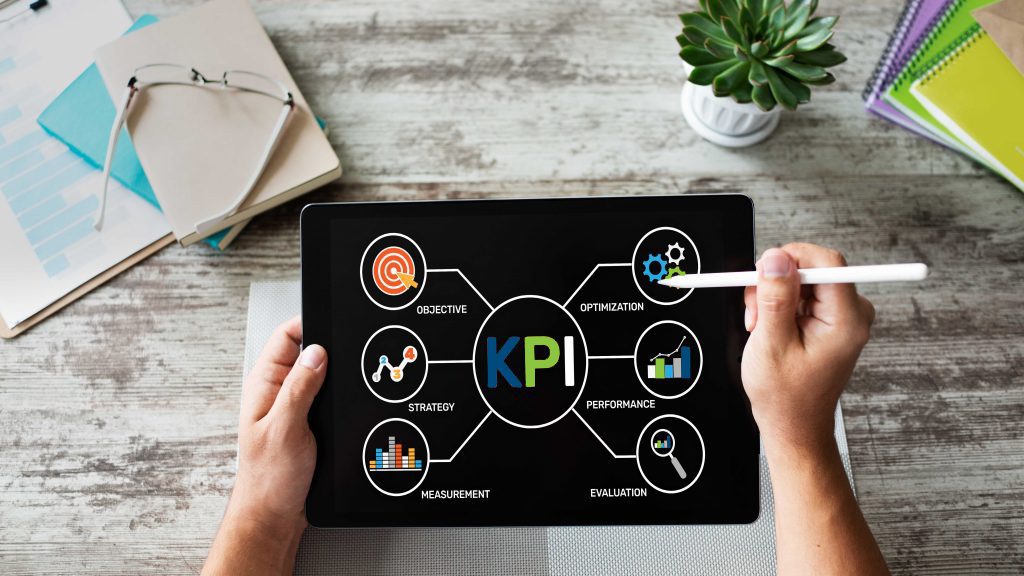

24% of survey participants reported that 41-60% of their guests were global. It means half their business was being restricted by global travel bans.
Image credit – https://www.itb-community.com/
In the hotel industry, things change quickly. Demand, pricing, seasonality, and location all affect how much money your hotel produces. But effective hotel revenue management helps to secure profits and gain a competitive edge. To achieve this, it is crucial to track and analyze hotel industry KPIs that provide valuable insights into the hotel’s revenue strategies.
KPIs allow hotels to evaluate the status of their business at the moment and, in response, modify pricing and overall strategy. These KPIs for hotels help to monitor financial health, measure the accuracy of pricing strategies, and even help to improve it.
By using the right set of revenue management KPIs, hotel owners can make informed decisions, optimize revenue, and much more. In this post, we’ll walk you through the most used KPIs that track specific hotel data points. We’ll talk about various revenue methods as well as how KPIs can lead to the success of a hotel. Searching for revenue management companies for hotels? Click below.
Explore the Best Hotel Revenue Management Companies in India
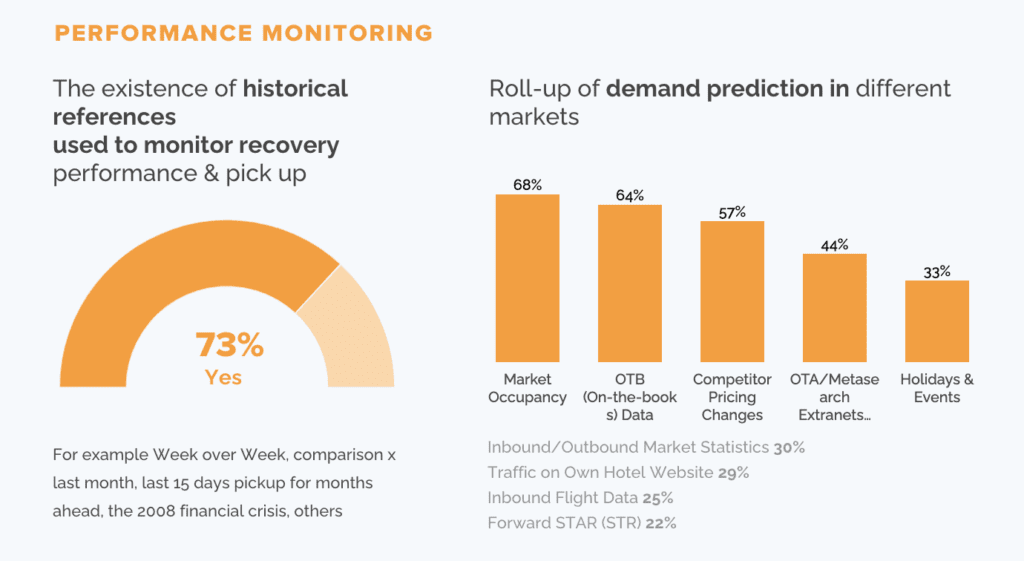


The revenue management concept and KPIs are crucial for the hospitality sector.
Image credit – https://www.itb-community.com/
Key Statistics
In a study by ITB Community, 73% of respondents still use past data to track recovery, performance, and pick-up. Instead of comparing year-on-year data, most revenue managers have switched to week-over-week and month-over-month analyses to determine if and how they are recovering as the situation develops.
1. 68% of revenue managers check market occupancy first.
2. 64% said they review on-the-books data.
3. While 57% examine competitor pricing changes.
4. 44% assess search volume on OTAs and metasearch sites.
5. Only 29% look at traffic on their hotel website.
6. Upcoming holidays and events play a role for 33% of respondents.
7. While 30% analyze inbound and outbound market statistics.
What are Revenue Management KPIs for Hotels? Why are these KPIs Important?
What is revenue management in hotels? How to increase hotel revenue? We have already discussed this in previous blog posts. Revenue management for the hospitality industry is important. Any company, no matter its size, must periodically monitor its performance to determine its success. Even the hotel sector is aware of this fact. In order to assess the overall success, multiple KPIs for hotel industry are utilized.
Similarly, to this, hotel KPIs use a variety of metrics to assess a hotel’s performance. These include Average Daily Rate (ADR), Occupancy Rate, Revenue per Available Room (RevPAR), Average Length of Stay (ALOS), and many more.
In simple words, KPIs are vital because if you don’t measure your hotel’s success, you can’t improve it. It goes without saying that no hotel wants to remain in the same position. The KPIs for hotels help you in assessing your performance. You can also know whether you are making money from your efforts or suffering an irreparable loss.
By using these hotel industry metrics, you can determine where your marketing and performance fall short. You can know your strengths and limitations as well. Want to accelerate your revenue growth? Keep reading to know about the best hotel revenue management company. Unable to find the best revenue management systems? Click below.
Request a Demo for Hotel Revenue Management Software
12 Essential Revenue Management KPIs for Hotels to Track Your Performance
Do you want to boost your hotel’s room revenue? Revenue management is a crucial aspect of running a successful hotel. To monitor and optimize your revenue strategies, it is vital to track KPIs that provide valuable insights into your hotel’s performance. Here are some KPIs that you should use.
Request a Demo for Hotel Revenue Management Software
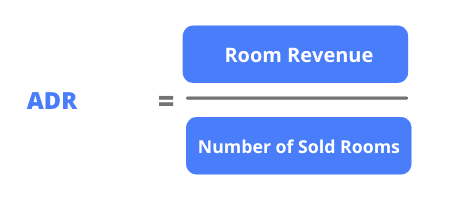


Revenue management benefits are immense and ADR is one of the most important revenue management KPIs.
Image credit – https://www.upstay.tech/
1. Average Daily Rate (ADR) –
What is ADR in hotels? Did you know? ADR is one of the most vital KPIs for hotels that measures the average room revenue per occupied room in a hotel. By dividing the total room revenue by the number of rooms sold, ADR provides valuable insights into pricing strategies and revenue potential. ADR allows you to assess the pricing decisions and make changes to optimize revenue.
A high ADR indicates the ability to command high room rates, while a low ADR may suggest the need to adjust pricing strategies or target other markets. By analyzing ADR trends over time and comparing them, hotels can make informed decisions to increase revenue and profits.
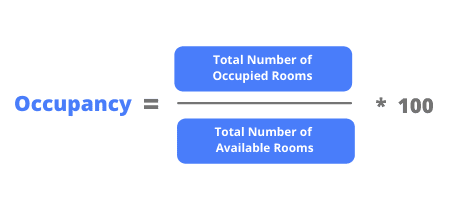


Revenue management roles include the calculation of occupancy.
Image credit – https://www.upstay.tech/
2. Occupancy Rate (OR)
What are hotel occupancy rates? OR is one of the most used KPIs for hotels that measures the percentage of available rooms that are occupied during a specific period. It provides valuable insights into the hotel’s demand levels and the efficiency of its sales and marketing efforts. A high OR signifies strong demand and effective revenue management in the hospitality industry. While a low OR may indicate the need for changes in pricing, marketing, or channels.
What are the benefits of OR? By tracking OR trends and comparing them to historic data, hotels can make informed decisions to optimize available rooms, pricing strategies, and more. Optimal OR helps to maximize revenue.
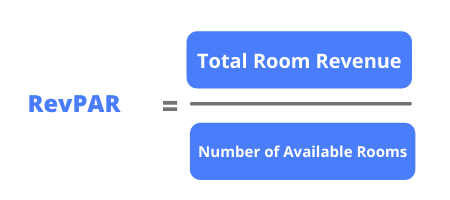


Pricing strategy for hotels is important to achieve RevPAR.
Image credit – https://www.upstay.tech/
3. Revenue Per Available Room (Hotel RevPAR)
It is one of the most critical KPIs for hotels that measures the total revenue per available room in a hotel. How to calculate RevPAR for hotels? Looking for revenue per available room formula? RevPAR is calculated by multiplying the ADR by the Occupancy Rate. RevPAR provides a detailed view of a hotel’s revenue strategies, taking into account both the room rates and the occupancy levels.
By tracking RevPAR, hotel owners can assess the efficiency of their operations. Increasing RevPAR can be achieved through many strategies such as optimizing pricing, improving ORs, and boosting revenue from ancillary services. It is widely used in the hotel industry to gain an edge against their rivals. By focusing on enhancing RevPAR, hotels can drive revenue growth. Do you track RevPAR?



Use revenue management software for hotels to improve ALOS.
Image credit – https://www.upstay.tech/
4. Average Length of Stay (ALOS)
Are you new to this metric? ALOS measures the average number of nights guests stay at a hotel. It provides data about room usage and revenue. By tracking ALOS, hotel owners can assess guest booking patterns, identify trends, and adjust their strategies as needed. A high ALOS indicates longer guest stays, which can lead to increased room revenue and better chances for upselling services.
A low ALOS may suggest the need to implement tactics to encourage longer stays or attract new guests. Knowing ALOS helps hotels optimize room inventory, forecast demand, allocate resources, and tailor marketing efforts to specific guest segments. By managing ALOS, hotels can improve revenue per guest. In a global survey by ITB Community, 38% of revenue managers state they will increase their marketing spend after COVID-19. 32% want to keep it the same, while only 25% plan to reduce it. Do you want an example? Read till the end.
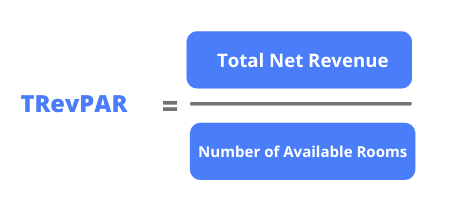


Use revenue management tools to improve TRevPAR.
Image credit – https://www.upstay.tech/
5. Total Revenue per Available Room (TRevPAR)
Why is it crucial? TRevPAR measures the total revenue from all sources such as rooms, food and beverage, spa, and other services, per available room. It takes into account the room revenue and the revenue from other hotel services.
Increasing TRevPAR can be achieved by adding cross-selling and upselling, enhancing ancillary services, and maximizing revenue from non-room sources. It allows hotels to evaluate and diversify revenue beyond room revenue alone. It leads to the success of your hotel.
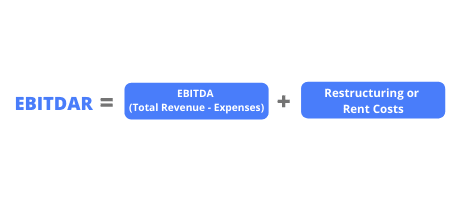


Many hotel management companies in India can help you with EBITDA.
Image credit – https://www.upstay.tech/
6. Earnings Before Interest, Taxes, Depreciation, and Amortization (EBITDA)
It measures a hotel’s operating profit before accounting for non-operating expenses and non-cash items. It provides a clear picture of a hotel’s ability to generate operating profits from its core business operations. EBITDA is calculated when you subtract operating expenses besides interest, taxes, etc. from total revenue.
This metric helps evaluate a hotel’s operating efficiency. By analyzing EBITDA, hotel owners can compare performance with industry peers, and make informed decisions related to cost, pricing strategies, and more. In a survey by ITB Community, 57% of revenue managers say they will reconsider which hotels they compare to after COVID-19. EBITDA serves as a valuable tool for financial analysis, providing a measure of a hotel’s cash flow. Do you need expert advice?
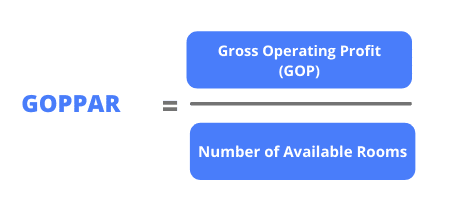


GOPPAR is used to maximize profits.
Image credit – https://www.upstay.tech/
7. Gross Operating Profit per Available Room (GOPPAR)
It measures the profit of each available room in a hotel after cutting operating and undistributed expenses. It takes into account revenue from all sources and subtracts the related costs.
GOPPAR is calculated by dividing the gross operating profit (GOP) by the number of available rooms. This metric helps hotels evaluate the efficiency of their operations, identify areas to optimize cost, and make informed decisions to maximize profits.
[Suggested Read: 9 Best Forecasting Tips for Your Revenue Management Strategy]



ARPA helps to upsell and cross-sell hotel services.
Image credit – https://www.mosaic.tech/
8. Average Revenue per Account (ARPA)
It measures the average revenue from each customer segment over a specific period of time. ARPA provides revenue insights into customer groups. It helps hotels assess their pricing strategies, upselling and cross-selling efforts, and customer retention.
It leads to revenue growth, helps optimize pricing plans, and tailors offerings to maximize customer value. Increasing ARPA can be achieved through upgrading customers to high-priced plans, add-on services, or keeping the customer engaged. You can know the revenue potential of each customer. Looking for more KPIs for hotels?
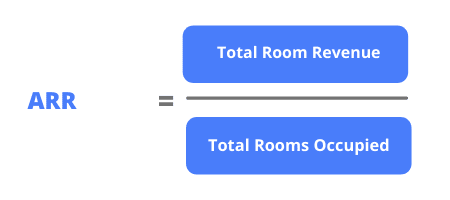


ARR is crucial for the success of every hotel.
Image credit – https://www.upstay.tech/
9. Average Room Rate (ARR)
What is the difference between RevPAR and ARR? ARR measures the average rate at which hotel rooms are sold over a given period. How to calculate it? Divide the total room revenue by the number of rooms sold. Being one of the best KPIs for hotels, ARR provides valuable insights into the revenue management and pricing of a hotel and its ability to generate revenue from its room inventory.
A high ARR indicates that the hotel is able to command high room rates, while a low ARR may indicate the need for changes in pricing or targeting many market segments. Using RevPAR, hotels can make data-driven decisions to maximize revenue.
10. Gross Operating Profit (GOP)
What is GOP? GOP is the indicator of a hotel’s financial success at its maximum level. GOP is one of the KPIs for hotels that measures their earnings after deducting all operational costs.
GOP formula: Gross Operating Revenue – Gross Operating Expenses
Increasing GOP can be achieved through various means, such as you can control operating expenses, improve productivity, and implement RM practices. GOP helps hotels assess their financial health, monitor profit trends, and drive growth.
11. Market Penetration Index (MPI)
It is a metric used to assess a hotel’s performance relative to its rivals within a specific market. How can you calculate it? Divide a hotel’s actual market share by its potential market share and multiply the result by 100.
What does a high MPI indicate? A high MPI indicates that a hotel is capturing a large portion of the market compared to its rivals. It signifies a stronger position and high demand. By analyzing MPI, you can evaluate their market, identify growth, and develop strategies to increase market share and profits. It is one of the top KPIs for hotels used today.
12. Net Revenue per Available Room (NRevPAR)
How is RevPAR calculated? We have discussed it above. NRevPAR is used in the hotel industry to measure the total revenue per available room, after accounting for expenses such as commissions and distribution costs. How to calculate it? By dividing the total net revenue earned by the number of available rooms. It provides a detailed view of a hotel’s revenue, taking into account both ORs and ADRs.
By tracking NRevPAR, you can assess if their revenue management strategies are working, identify areas to improve, and make informed decisions. It serves as one of the most crucial KPIs for hotels in terms of financial health.
Do you want to boost topline revenue at your hotel by up to 20%? Why hire a hotel revenue manager? Save time & effort by making use of a dedicated team! Keep reading.
[Suggested Read: 10 Reasons to Use Revenue Management Systems for Hotels]
How Revnomix can Help with Revenue Management KPIs for Hotels
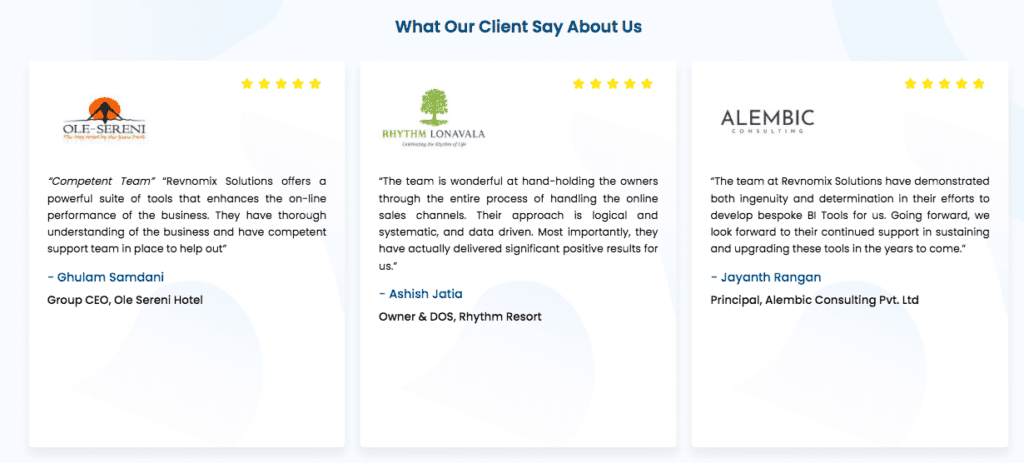


Revnomix is the best revenue management company that offers a range of revenue management solutions to help hotels optimize their pricing, revenue, and more. Here’s how Revnomix can help with revenue management (RM) KPIs for hotels:
1. Data Analysis: We have a combined experience of 100+ years in RM and analyzing hotel data analytics. We have helped well-known hotels like Hyatt and Hilton identify trends, patterns, and growth within their revenue data to improve KPIs.
2. Optimize Rates: We offer advanced rate optimization strategies tailored to each hotel’s unique needs. We can recommend a dynamic pricing model to maximize ADR, RevPAR, and other KPIs by leveraging market demand, competitor analysis, and historic data.
3. Manage Channels: Effective distribution is crucial for hotels to reach their target audience and optimize revenue. We provide the right channel mix, rate parity, and inventory allocation. It helps to drive revenue growth and enhance KPIs.
4. Demand & Forecasting: Accurate forecasting of demand is vital for your hotel’s success. We assist hotels in robust forecasting models, taking into account market trends, and other factors, to optimize inventory, revenue, and dynamic pricing for hotels.
5. Reports: We offer performance monitoring and reporting services to track the progress of RM KPIs. We provide regular reports and the best revenue management software with dashboards that show key metrics, trends, and more. This enables hotels to make data-driven decisions to enhance KPIs.
What kind of properties do we work with to boost revenue?
1. Group Hotels & Hotel Chains
2. Boutique Hotels
3. Independent Hotels & Resorts
4. Serviced Apartments
5. B&Bs
6. Asset Management Companies
7. Third-party Management Companies
Do you want to track your revenue growth? Looking for the top revenue management company in India? When making changes, we take distribution costs into account. We also keep an eye on RevPAR and GOPPAR to see how they affect your hotel. Our experts can fine-tune the GOP, which should provide you with great long-term profits.
Get in touch with us for data analytics, pricing and revenue management.





24% of survey participants reported that 41-60% of their guests were global. It means half their business was being restricted by global travel bans.
Image credit – https://www.itb-community.com/
In the hotel industry, things change quickly. Demand, pricing, seasonality, and location all affect how much money your hotel produces. But effective hotel revenue management helps to secure profits and gain a competitive edge. To achieve this, it is crucial to track and analyze hotel industry KPIs that provide valuable insights into the hotel’s revenue strategies.
KPIs allow hotels to evaluate the status of their business at the moment and, in response, modify pricing and overall strategy. These KPIs for hotels help to monitor financial health, measure the accuracy of pricing strategies, and even help to improve it.
By using the right set of revenue management KPIs, hotel owners can make informed decisions, optimize revenue, and much more. In this post, we’ll walk you through the most used KPIs that track specific hotel data points. We’ll talk about various revenue methods as well as how KPIs can lead to the success of a hotel. Searching for revenue management companies for hotels? Click below.
Explore the Best Hotel Revenue Management Companies in India



The revenue management concept and KPIs are crucial for the hospitality sector.
Image credit – https://www.itb-community.com/
Key Statistics
In a study by ITB Community, 73% of respondents still use past data to track recovery, performance, and pick-up. Instead of comparing year-on-year data, most revenue managers have switched to week-over-week and month-over-month analyses to determine if and how they are recovering as the situation develops.
1. 68% of revenue managers check market occupancy first.
2. 64% said they review on-the-books data.
3. While 57% examine competitor pricing changes.
4. 44% assess search volume on OTAs and metasearch sites.
5. Only 29% look at traffic on their hotel website.
6. Upcoming holidays and events play a role for 33% of respondents.
7. While 30% analyze inbound and outbound market statistics.
What are Revenue Management KPIs for Hotels? Why are these KPIs Important?
What is revenue management in hotels? How to increase hotel revenue? We have already discussed this in previous blog posts. Revenue management for the hospitality industry is important. Any company, no matter its size, must periodically monitor its performance to determine its success. Even the hotel sector is aware of this fact. In order to assess the overall success, multiple KPIs for hotel industry are utilized.
Similarly, to this, hotel KPIs use a variety of metrics to assess a hotel’s performance. These include Average Daily Rate (ADR), Occupancy Rate, Revenue per Available Room (RevPAR), Average Length of Stay (ALOS), and many more.
In simple words, KPIs are vital because if you don’t measure your hotel’s success, you can’t improve it. It goes without saying that no hotel wants to remain in the same position. The KPIs for hotels help you in assessing your performance. You can also know whether you are making money from your efforts or suffering an irreparable loss.
By using these hotel industry metrics, you can determine where your marketing and performance fall short. You can know your strengths and limitations as well. Want to accelerate your revenue growth? Keep reading to know about the best hotel revenue management company. Unable to find the best revenue management systems? Click below.
Request a Demo for Hotel Revenue Management Software
12 Essential Revenue Management KPIs for Hotels to Track Your Performance
Do you want to boost your hotel’s room revenue? Revenue management is a crucial aspect of running a successful hotel. To monitor and optimize your revenue strategies, it is vital to track KPIs that provide valuable insights into your hotel’s performance. Here are some KPIs that you should use.
Request a Demo for Hotel Revenue Management Software



Revenue management benefits are immense and ADR is one of the most important revenue management KPIs.
Image credit – https://www.upstay.tech/
1. Average Daily Rate (ADR) –
What is ADR in hotels? Did you know? ADR is one of the most vital KPIs for hotels that measures the average room revenue per occupied room in a hotel. By dividing the total room revenue by the number of rooms sold, ADR provides valuable insights into pricing strategies and revenue potential. ADR allows you to assess the pricing decisions and make changes to optimize revenue.
A high ADR indicates the ability to command high room rates, while a low ADR may suggest the need to adjust pricing strategies or target other markets. By analyzing ADR trends over time and comparing them, hotels can make informed decisions to increase revenue and profits.



Revenue management roles include the calculation of occupancy.
Image credit – https://www.upstay.tech/
2. Occupancy Rate (OR)
What are hotel occupancy rates? OR is one of the most used KPIs for hotels that measures the percentage of available rooms that are occupied during a specific period. It provides valuable insights into the hotel’s demand levels and the efficiency of its sales and marketing efforts. A high OR signifies strong demand and effective revenue management in the hospitality industry. While a low OR may indicate the need for changes in pricing, marketing, or channels.
What are the benefits of OR? By tracking OR trends and comparing them to historic data, hotels can make informed decisions to optimize available rooms, pricing strategies, and more. Optimal OR helps to maximize revenue.



Pricing strategy for hotels is important to achieve RevPAR.
Image credit – https://www.upstay.tech/
3. Revenue Per Available Room (Hotel RevPAR)
It is one of the most critical KPIs for hotels that measures the total revenue per available room in a hotel. How to calculate RevPAR for hotels? Looking for revenue per available room formula? RevPAR is calculated by multiplying the ADR by the Occupancy Rate. RevPAR provides a detailed view of a hotel’s revenue strategies, taking into account both the room rates and the occupancy levels.
By tracking RevPAR, hotel owners can assess the efficiency of their operations. Increasing RevPAR can be achieved through many strategies such as optimizing pricing, improving ORs, and boosting revenue from ancillary services. It is widely used in the hotel industry to gain an edge against their rivals. By focusing on enhancing RevPAR, hotels can drive revenue growth. Do you track RevPAR?



Use revenue management software for hotels to improve ALOS.
Image credit – https://www.upstay.tech/
4. Average Length of Stay (ALOS)
Are you new to this metric? ALOS measures the average number of nights guests stay at a hotel. It provides data about room usage and revenue. By tracking ALOS, hotel owners can assess guest booking patterns, identify trends, and adjust their strategies as needed. A high ALOS indicates longer guest stays, which can lead to increased room revenue and better chances for upselling services.
A low ALOS may suggest the need to implement tactics to encourage longer stays or attract new guests. Knowing ALOS helps hotels optimize room inventory, forecast demand, allocate resources, and tailor marketing efforts to specific guest segments. By managing ALOS, hotels can improve revenue per guest. In a global survey by ITB Community, 38% of revenue managers state they will increase their marketing spend after COVID-19. 32% want to keep it the same, while only 25% plan to reduce it. Do you want an example? Read till the end.



Use revenue management tools to improve TRevPAR.
Image credit – https://www.upstay.tech/
5. Total Revenue per Available Room (TRevPAR)
Why is it crucial? TRevPAR measures the total revenue from all sources such as rooms, food and beverage, spa, and other services, per available room. It takes into account the room revenue and the revenue from other hotel services.
Increasing TRevPAR can be achieved by adding cross-selling and upselling, enhancing ancillary services, and maximizing revenue from non-room sources. It allows hotels to evaluate and diversify revenue beyond room revenue alone. It leads to the success of your hotel.



Many hotel management companies in India can help you with EBITDA.
Image credit – https://www.upstay.tech/
6. Earnings Before Interest, Taxes, Depreciation, and Amortization (EBITDA)
It measures a hotel’s operating profit before accounting for non-operating expenses and non-cash items. It provides a clear picture of a hotel’s ability to generate operating profits from its core business operations. EBITDA is calculated when you subtract operating expenses besides interest, taxes, etc. from total revenue.
This metric helps evaluate a hotel’s operating efficiency. By analyzing EBITDA, hotel owners can compare performance with industry peers, and make informed decisions related to cost, pricing strategies, and more. In a survey by ITB Community, 57% of revenue managers say they will reconsider which hotels they compare to after COVID-19. EBITDA serves as a valuable tool for financial analysis, providing a measure of a hotel’s cash flow. Do you need expert advice?



GOPPAR is used to maximize profits.
Image credit – https://www.upstay.tech/
7. Gross Operating Profit per Available Room (GOPPAR)
It measures the profit of each available room in a hotel after cutting operating and undistributed expenses. It takes into account revenue from all sources and subtracts the related costs.
GOPPAR is calculated by dividing the gross operating profit (GOP) by the number of available rooms. This metric helps hotels evaluate the efficiency of their operations, identify areas to optimize cost, and make informed decisions to maximize profits.
[Suggested Read: 9 Best Forecasting Tips for Your Revenue Management Strategy]



ARPA helps to upsell and cross-sell hotel services.
Image credit – https://www.mosaic.tech/
8. Average Revenue per Account (ARPA)
It measures the average revenue from each customer segment over a specific period of time. ARPA provides revenue insights into customer groups. It helps hotels assess their pricing strategies, upselling and cross-selling efforts, and customer retention.
It leads to revenue growth, helps optimize pricing plans, and tailors offerings to maximize customer value. Increasing ARPA can be achieved through upgrading customers to high-priced plans, add-on services, or keeping the customer engaged. You can know the revenue potential of each customer. Looking for more KPIs for hotels?



ARR is crucial for the success of every hotel.
Image credit – https://www.upstay.tech/
9. Average Room Rate (ARR)
What is the difference between RevPAR and ARR? ARR measures the average rate at which hotel rooms are sold over a given period. How to calculate it? Divide the total room revenue by the number of rooms sold. Being one of the best KPIs for hotels, ARR provides valuable insights into the revenue management and pricing of a hotel and its ability to generate revenue from its room inventory.
A high ARR indicates that the hotel is able to command high room rates, while a low ARR may indicate the need for changes in pricing or targeting many market segments. Using RevPAR, hotels can make data-driven decisions to maximize revenue.
10. Gross Operating Profit (GOP)
What is GOP? GOP is the indicator of a hotel’s financial success at its maximum level. GOP is one of the KPIs for hotels that measures their earnings after deducting all operational costs.
GOP formula: Gross Operating Revenue – Gross Operating Expenses
Increasing GOP can be achieved through various means, such as you can control operating expenses, improve productivity, and implement RM practices. GOP helps hotels assess their financial health, monitor profit trends, and drive growth.
11. Market Penetration Index (MPI)
It is a metric used to assess a hotel’s performance relative to its rivals within a specific market. How can you calculate it? Divide a hotel’s actual market share by its potential market share and multiply the result by 100.
What does a high MPI indicate? A high MPI indicates that a hotel is capturing a large portion of the market compared to its rivals. It signifies a stronger position and high demand. By analyzing MPI, you can evaluate their market, identify growth, and develop strategies to increase market share and profits. It is one of the top KPIs for hotels used today.
12. Net Revenue per Available Room (NRevPAR)
How is RevPAR calculated? We have discussed it above. NRevPAR is used in the hotel industry to measure the total revenue per available room, after accounting for expenses such as commissions and distribution costs. How to calculate it? By dividing the total net revenue earned by the number of available rooms. It provides a detailed view of a hotel’s revenue, taking into account both ORs and ADRs.
By tracking NRevPAR, you can assess if their revenue management strategies are working, identify areas to improve, and make informed decisions. It serves as one of the most crucial KPIs for hotels in terms of financial health.
Do you want to boost topline revenue at your hotel by up to 20%? Why hire a hotel revenue manager? Save time & effort by making use of a dedicated team! Keep reading.
[Suggested Read: 10 Reasons to Use Revenue Management Systems for Hotels]
How Revnomix can Help with Revenue Management KPIs for Hotels



Revnomix is the best revenue management company that offers a range of revenue management solutions to help hotels optimize their pricing, revenue, and more. Here’s how Revnomix can help with revenue management (RM) KPIs for hotels:
1. Data Analysis: We have a combined experience of 100+ years in RM and analyzing hotel data analytics. We have helped well-known hotels like Hyatt and Hilton identify trends, patterns, and growth within their revenue data to improve KPIs.
2. Optimize Rates: We offer advanced rate optimization strategies tailored to each hotel’s unique needs. We can recommend a dynamic pricing model to maximize ADR, RevPAR, and other KPIs by leveraging market demand, competitor analysis, and historic data.
3. Manage Channels: Effective distribution is crucial for hotels to reach their target audience and optimize revenue. We provide the right channel mix, rate parity, and inventory allocation. It helps to drive revenue growth and enhance KPIs.
4. Demand & Forecasting: Accurate forecasting of demand is vital for your hotel’s success. We assist hotels in robust forecasting models, taking into account market trends, and other factors, to optimize inventory, revenue, and dynamic pricing for hotels.
5. Reports: We offer performance monitoring and reporting services to track the progress of RM KPIs. We provide regular reports and the best revenue management software with dashboards that show key metrics, trends, and more. This enables hotels to make data-driven decisions to enhance KPIs.
What kind of properties do we work with to boost revenue?
1. Group Hotels & Hotel Chains
2. Boutique Hotels
3. Independent Hotels & Resorts
4. Serviced Apartments
5. B&Bs
6. Asset Management Companies
7. Third-party Management Companies
Do you want to track your revenue growth? Looking for the top revenue management company in India? When making changes, we take distribution costs into account. We also keep an eye on RevPAR and GOPPAR to see how they affect your hotel. Our experts can fine-tune the GOP, which should provide you with great long-term profits.
Get in touch with us for data analytics, pricing and revenue management.